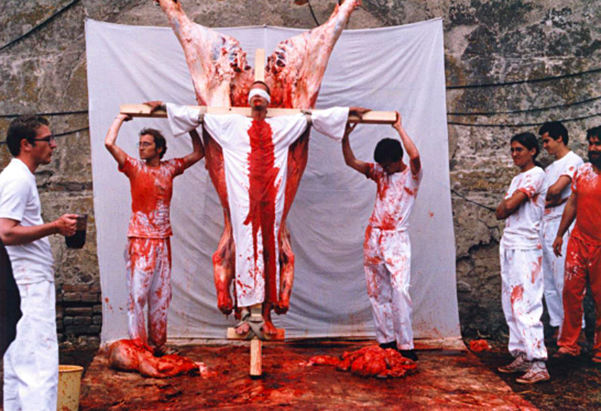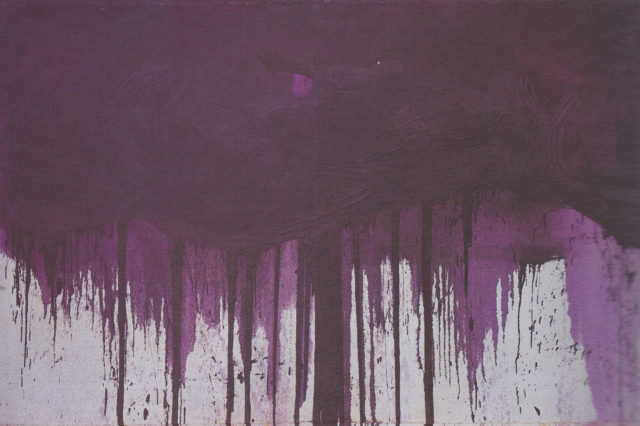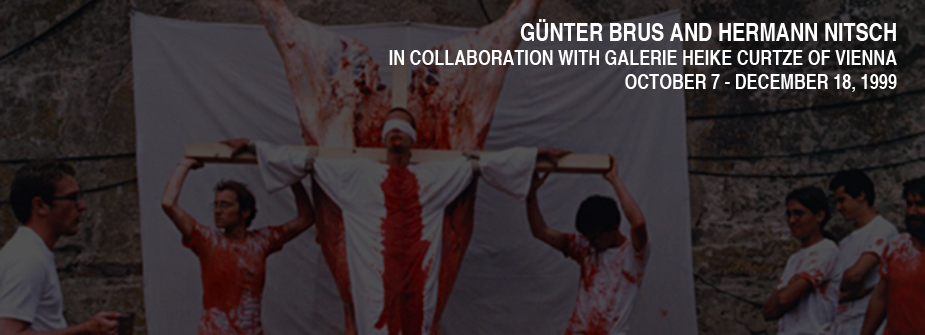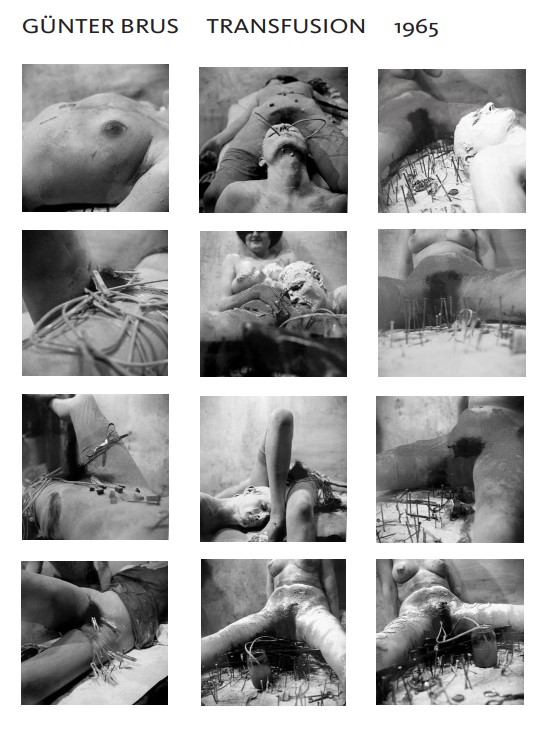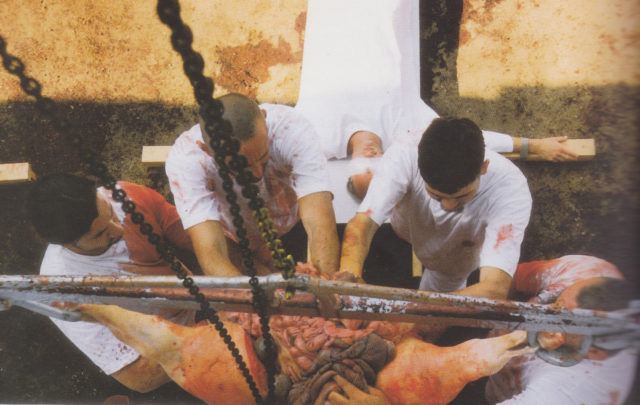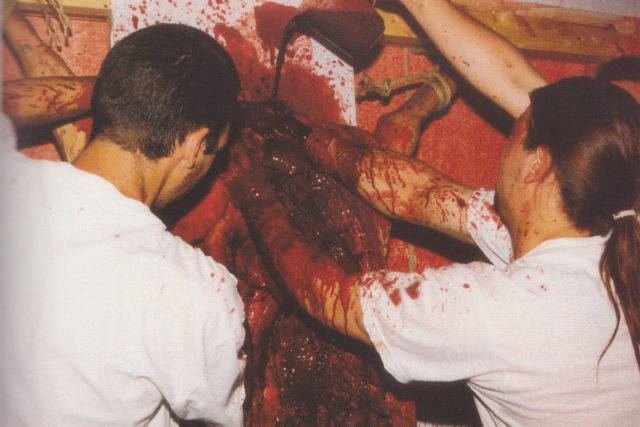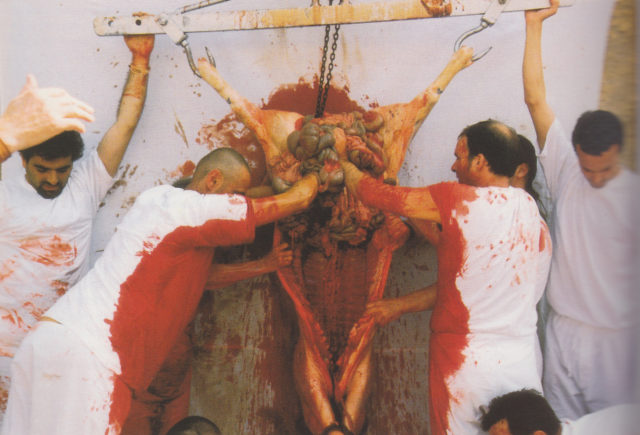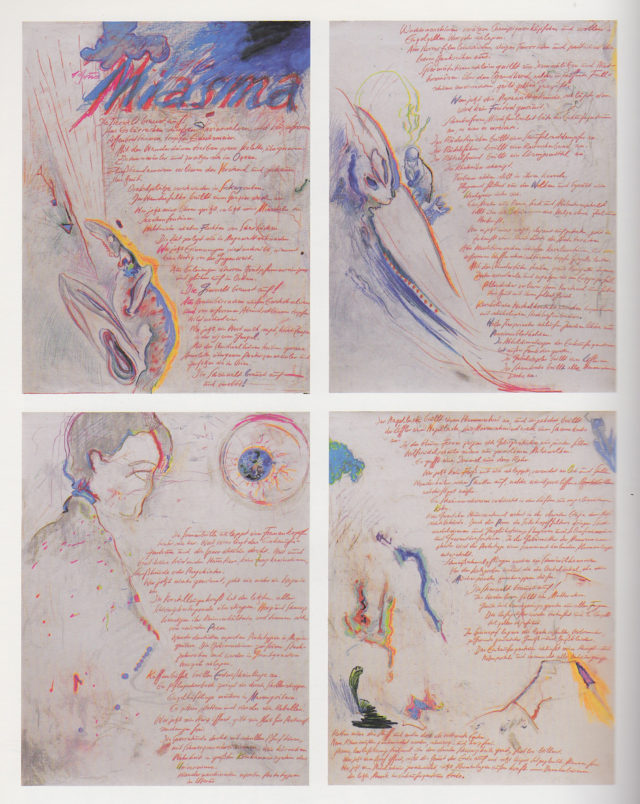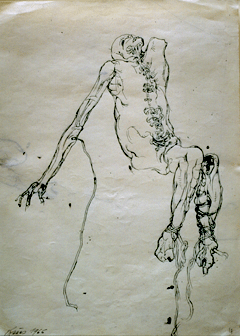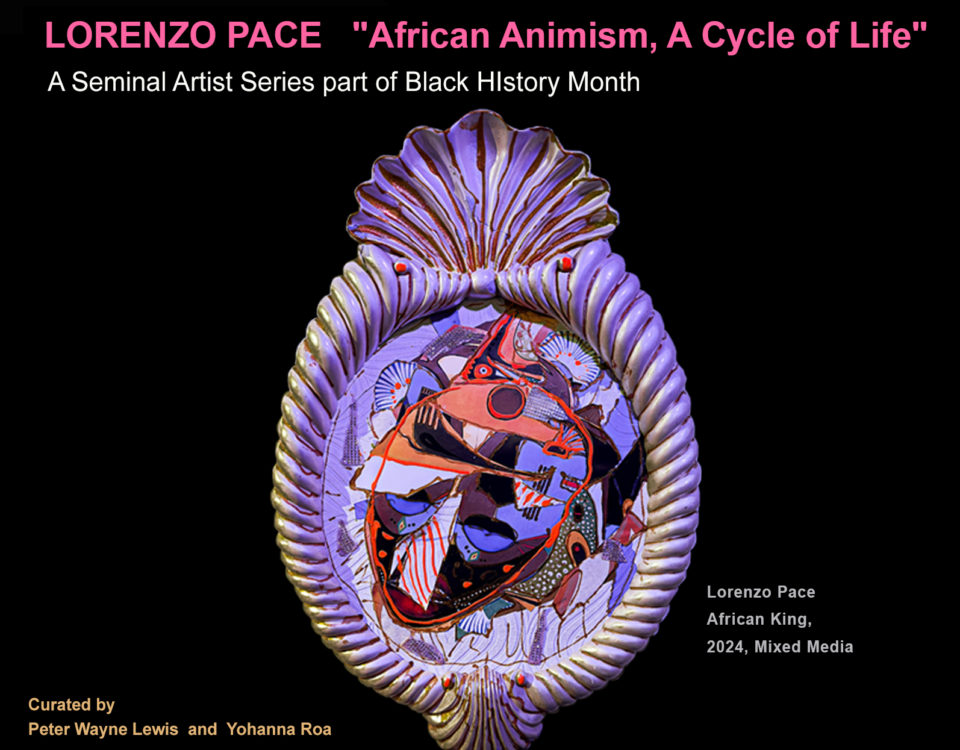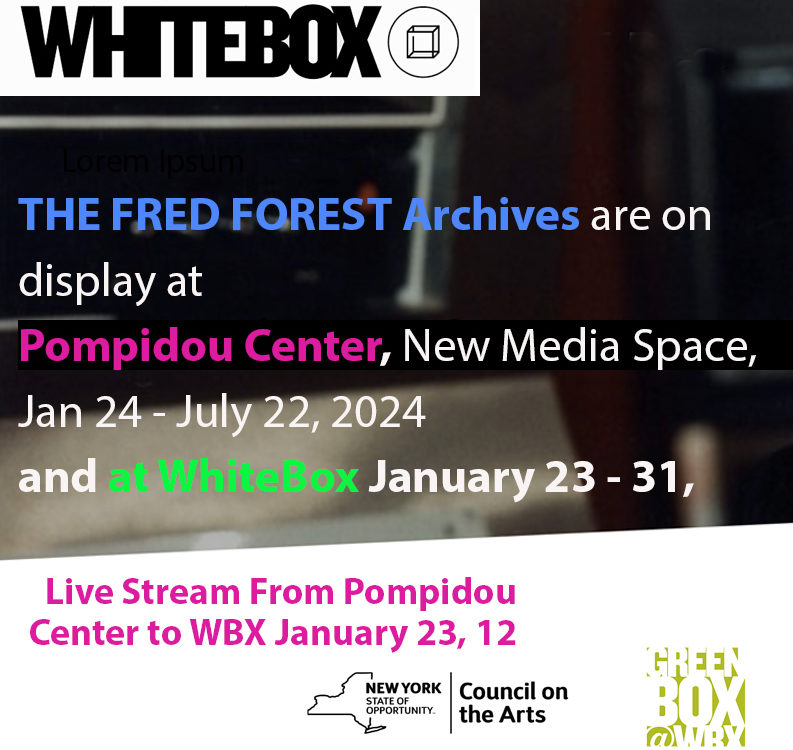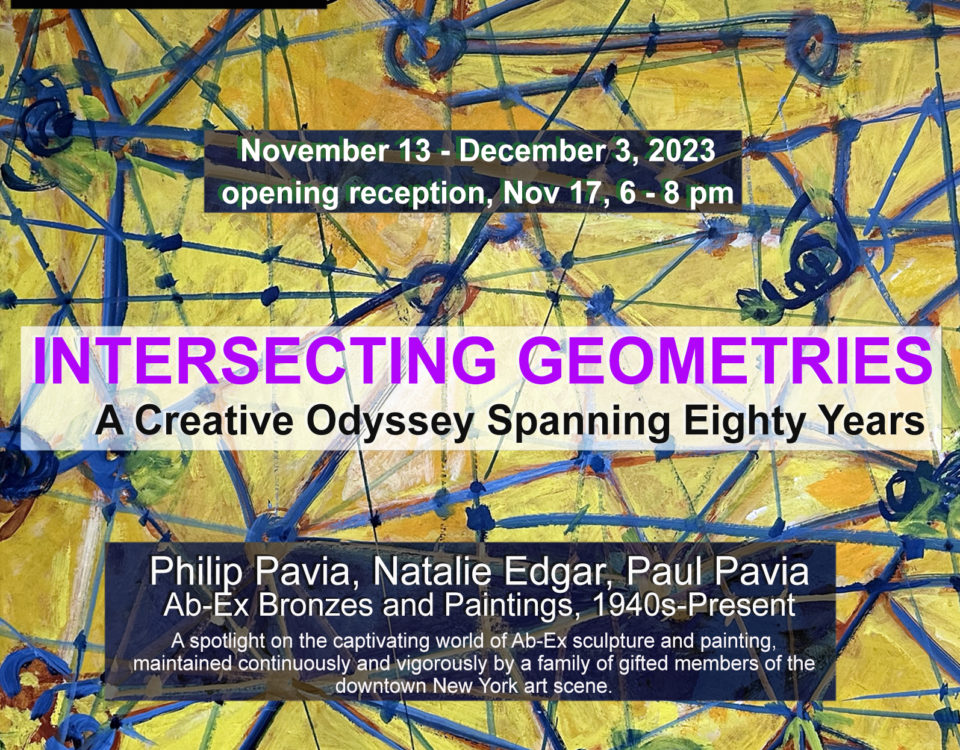PLURAL SPEECH
December 3, 1998TRANSLATION / SEDUCTION / DISPLACEMENT
February 3, 2000GÜNTER BRUS AND HERMANN NITSCH IN COLLABORATION WITH GALERIE HEIKE CURTZE OF VIENNA OCTOBER 7 – DECEMBER 18, 1999
Curated by Juan Puntes and the artists in Collaboration with Galerie Heike Curtze of Vienna
Since their “Viennese Actionism” days in the 1960s, these two figureheads of contemporary Austrian art each continued to create an intense and provocative body of work.
Their 1999 self-titled and self-curated exhibition at WhiteBox traced a remarkable history of their involvement and devotion to their distinctive artistic visions, presenting works that had rarely been shown on the American scene. The exhibition received a nomination from the International Art Critics Association for “Best Group Show.” Despite this acclaim, Brus and Nitsch’s enormous influence on present-day performance, body art, and post-conceptual thought is seldom acknowledged.
The exhibition showed some of Hermann Nitsch’s early work, namely his “poured paintings” and films recorded during the Actions, as well as a large series of photographs documenting his six-day Orgies-Mysteries Theatre (1998), where his ritualistic and mythical “plays” have been taking place since 1971. Originally conceived of as an intensely sensory artwork of verbal poetry – owing in great part to Greek classics, James Joyce, Georg Trakl, and Europe’s Symbolists and Surrealists – Nitsch soon realized that words could never convey such concentrated and cathartic sensuousness as physical substances. So began Nitsch’s foray into the perverse and the rapturous, the wretched and the righteous; reality. This grand expression of pure excess captures the essence of Nitsch’s Gesamtkunstwerk, or “total work of art.”
On view also were Günter Brus’s rare Informel works, Actionist sketches, and a series of drawings including Self-Painting I and II (1965) and Walk in Vienna (1965, pictured above). Other intimate drawings and ImagePoems depicted the then more recent literary and visual elements of his complex and analytical world. “Words and images grow wild in one place,” writes Brus, “they exist as dreams, as calls to actions, in a world where the gap between idea, word and act no longer exists.”
Brus and Nitsch left us to consider how their desire to experience the artistic process remained so authentic, and with their work displayed side by side perhaps the highlight of the exhibition was the way in which it evolved so differently.
